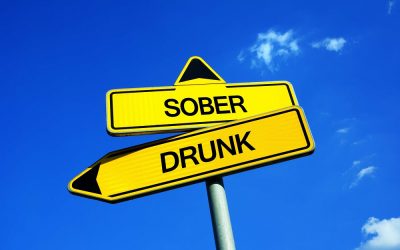However, consumption is the very last step in the relapse, and neglecting earlier events in a relapse prevents more effective intervention at earlier stages. Lapses (a one-time return to addictive behavior) and relapses (a return to an addictive lifestyle) do occur. Some people relapse several times before new behavior becomes a regular part of their lives.
How To Create a Relapse Prevention Plan
Substance abuse and mental health expert Terry Gorski has a nine-step relapse prevention plan that can help you recognize and manage relapse warning signs. Alan Marlatt, PhD, developed an approach that uses mental, behavioral, and lifestyle choices to prevent relapse. Most alcohol and drug treatment centers educate clients on relapse prevention techniques and help clients learn them in order to maintain recovery and achieve short- and long-term goals. There are a vast array of relapse prevention tools one can implement into their daily routine to help prevent relapse. There is a common misconception that relapse prevention skills should only be used when someone is having a desire to use. However, relapse prevention skills should be implemented into each recovering person’s daily schedule and routine to prevent or reduce the risk of cravings.
Lifestyle Changes
Part of the recovery process includes talking about relapse, and learning healthier ways to cope with triggers that can lead to it. A relapse prevention plan is a personalized strategy that outlines steps to take if the urge to use substances resurfaces. It includes coping mechanisms, support contacts, and professional resources.
Enhancing Patient-Centric Care with Blister Packs
- Many individuals in both the healthcare system and the larger society focus on relapse in terms of the consumption of the alcohol or drug that has been problematic for the individual.
- If a person is in therapy during emotional relapse, the focus of therapy may pivot towards reinforcing the importance of self-care.
- Given the rapid growth in this area, we allocate a portion of this review to discussing initial evidence for genetic associations with relapse.
1) Clients often want to put their addiction behind them and forget that they ever had an addiction. They feel they have lost part of their life to addiction and https://www.soldati-russian.ru/news/britanskaja_armija_pokazala_tank_gorodskogo_boja_challenger_2_tes_megatron/2023-07-25-9590 don’t want to spend the rest of their life focused on recovery. Remember, reaching out for help and support is vital if you ever feel overwhelmed or struggling.
How Common Is Relapse?

Researchers and practitioners have identified multiple steps which help to explain the progression of many individuals through the process of recovery. During a mental relapse, the patient has an internal struggle between the desire to resume using and the desire to remain abstinent. If our guilt is intense, in the absence of a plan, we likely will relapse until our next effort to change. At some point after making a change, the demands of maintaining it seem to outweigh the benefits of the change.
Relapse Prevention Means More Than Abstinence
Relative to a control condition, ABM resulted in significantly improved ability to disengage from alcohol-related stimuli during attentional bias tasks. While incidence of relapse did not differ between groups, the ABM group showed a significantly longer time to first heavy drinking day compared to the control group. Additionally, the intervention had no effect on subjective measures of craving, suggesting the possibility that intervention effects may have been specific to implicit cognitive processes [62]. Overall, research on implicit cognitions stands to enhance understanding of dynamic relapse processes and could ultimately aid in predicting lapses during high-risk situations. Developing a relapse prevention plan early in the recovery process and revising it regularly can be crucial for long-term success. If you’re not sure how to move through the recovery process, follow one of the relapse prevention plan models that are available.
- While you can’t eliminate all triggers, you can learn to manage them effectively through therapy, support, and healthy coping mechanisms.
- It takes time to get over a dependence, deal with withdrawal symptoms, and overcome the urge to use.
- Notably, relapse was observed in 40.9 percent of the participants, while an extended hospital stay was recorded in 71.1 percent of cases.
- This support can come from various sources and is instrumental in maintaining long-term sobriety.
- This activity describes relapse prevention interventions used in helping individuals recover from addiction.
- Participants in this stage may be at a significantly increased risk of a physical relapse during special times, such as a social event, holiday, or a trip when they may use mental bargaining to justify their use.
Living your best life

It’s essential to stick with your aftercare program and follow-up appointments. After all, relapse doesn’t mean you have failed; it means you need more support and treatment. Groups like Alcoholics Anonymous, Narcotics http://childrensgames.ru/for-girls/item/cute-pet-hospital?category_id=11 Anonymous, and SMART Recovery provide invaluable help, resources, and substance abuse group activities. They also offer a safe space for group members to talk about their struggles and learn to cope without substances.
- 5) People think that they have a better understanding of drugs and alcohol and, therefore, think they should be able to control a relapse or avoid the negative consequences.
- If you previously used during specific activities (for example, watching a game on TV, going to concerts, or spending time with friends), you may need to make changes.
- Effective relapse prevention extends beyond recognising triggers and creating plans; it also involves making fundamental lifestyle changes and adopting healthy coping strategies.
- Those participating in VM were compared to a treatment as usual (TAU) group on measures of post-incarceration substance use and psychosocial functioning.
- SMART Recovery, a program grounded in empowering individuals to break free from the chains of addictive behaviors, underscores the importance of mental liberation through the DIBs tool.
- Recent reviews provide a convincing rationale for the putative role of implicit processes in addictive behaviors and relapse [54,56,57].
- Later, when using turns into a negative experience, they often continue to expect it to be positive.

It is often said that recovering individuals are as sick as their secrets. One of the challenges of therapy is to help clients practice telling the truth and practice admitting when they have misspoken and quickly correcting it. There are many risks to recovery at this stage, including physical cravings, poor self-care, wanting to use just one more time, and struggling with whether one has an addiction. Clients are often eager to make big external changes in early recovery, such as changing jobs or ending a relationship.
12-step programs, such as Alcoholics Anonymous (AA), Cocaine Anonymous (CA), and Narcotics Anonymous (NA), provide additional guidance and support for people in recovery. Support groups also let participants collectively https://suzun.info/lifeassuranceguaranteedacceptance.html learn from substance abuse group topics. They offer a sense of belonging and understanding, often missing from other social circles. You must accept help from supportive family and friends when you need it.